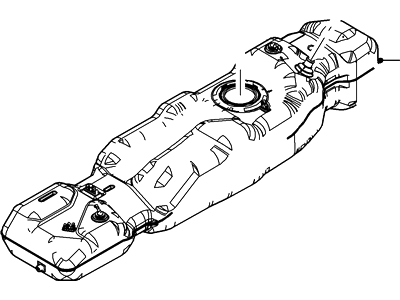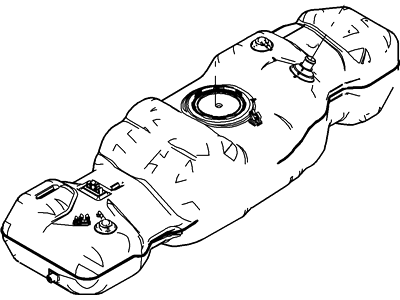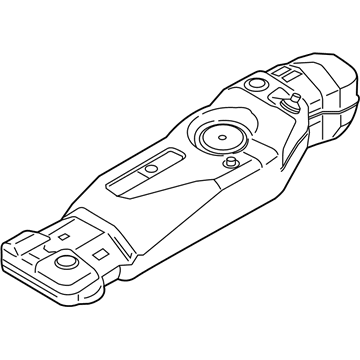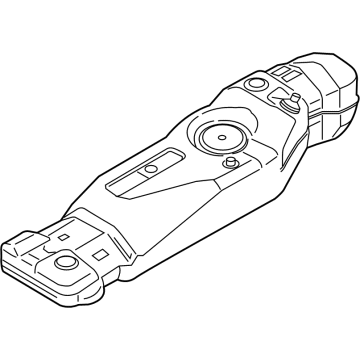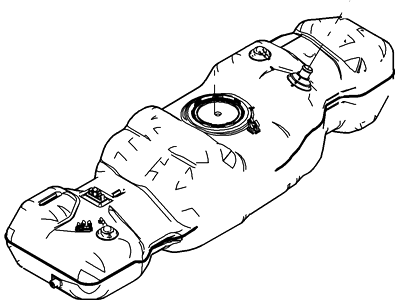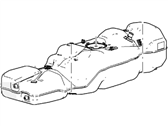

My Garage
My Account
Cart
Genuine Ford F-150 Fuel Tank
Gas Tank- Select Vehicle by Model
- Select Vehicle by VIN
Select Vehicle by Model
orMake
Model
Year
Select Vehicle by VIN
For the most accurate results, select vehicle by your VIN (Vehicle Identification Number).
73 Fuel Tanks found
Ford F-150 Fuel Tank Assembly
Part Number: 9L3Z-9002-C$854.15 MSRP: $1271.05You Save: $416.90 (33%)Ships in 1-3 Business DaysFord F-150 TANK ASY - FUEL
Part Number: JL3Z-9002-H$769.52 MSRP: $1145.12You Save: $375.60 (33%)Ships in 1-3 Business DaysFord F-150 TANK ASY - FUEL
Part Number: JL3Z-9002-F$769.52 MSRP: $1145.12You Save: $375.60 (33%)Ships in 1-3 Business DaysFord F-150 TANK ASY - FUEL
Part Number: JL3Z-9002-G$706.79 MSRP: $1051.77You Save: $344.98 (33%)Ships in 1-3 Business DaysFord F-150 Fuel Tank Assembly
Part Number: 9L3Z-9002-B$815.67 MSRP: $1213.80You Save: $398.13 (33%)Ships in 1-3 Business DaysFord F-150 Fuel Tank Assembly
Part Number: FL3Z-9002-A$706.79 MSRP: $1051.77You Save: $344.98 (33%)Ships in 1-3 Business DaysFord F-150 TANK ASY - FUEL
Part Number: PL3Z-9002-A$1614.84 MSRP: $2403.03You Save: $788.19 (33%)Ships in 1-2 Business DaysFord F-150 TANK ASY - FUEL
Part Number: JL3Z-9002-E$706.79 MSRP: $1051.77You Save: $344.98 (33%)Ships in 1-3 Business DaysFord F-150 Fuel Tank Assembly
Part Number: FL3Z-9002-B$769.52 MSRP: $1145.12You Save: $375.60 (33%)Ships in 1-3 Business DaysFord F-150 Fuel Tank Assembly
Part Number: JL3Z-9002-C$828.91 MSRP: $1233.50You Save: $404.59 (33%)Ships in 1-3 Business DaysFord F-150 Fuel Tank Assembly
Part Number: CL3Z-9002-B$961.33 MSRP: $1213.80You Save: $252.47 (21%)Ships in 1-3 Business DaysFord F-150 Fuel Tank Assembly
Part Number: HL3Z-9002-A$706.79 MSRP: $1051.77You Save: $344.98 (33%)Ships in 1-3 Business DaysFord F-150 Fuel Tank Assembly
Part Number: JL3Z-9002-A$706.79 MSRP: $1051.77You Save: $344.98 (33%)Ships in 1-3 Business DaysFord F-150 Fuel Tank Assembly
Part Number: HL3Z-9002-B$769.52 MSRP: $1145.12You Save: $375.60 (33%)Ships in 1-3 Business DaysFord F-150 Fuel Tank Assembly
Part Number: 9L3Z-9002-A$615.04 MSRP: $915.23You Save: $300.19 (33%)Ships in 1-3 Business DaysFord F-150 Fuel Tank Assembly
Part Number: AL3Z-9002-A$615.04 MSRP: $915.23You Save: $300.19 (33%)Ships in 1-3 Business Days
| Page 1 of 4 |Next >
1-20 of 73 Results
Ford F-150 Fuel Tank
The Fuel Tank of Ford F-150 vehicles is designed to hold and deliver fuel to the engine for the power to be produced in responding to jobs like moving families or towing equipment. To an extent that it can hold some considerable fuel quantity, Ford F-150 Fuel Tank comprises of: electric fuel pump or fuel gauge sender and his/her baffles to reduce noise and the fuel movement. Since its production, Ford F-150 Fuel Tanks have been made out of metal and more recently high density polyethylene (HDPE) plastic which has its strengths and weaknesses discussed below. Even though you may opt for metal tanks as they are quite durable, they are known to rust and corrode and on the other hand, plastic tanks are known to crack under pressure. Furthermore, high capacity tanks utilizing military-grade polymer are likely to be sold, with increased durability as well as increased driving range. When ever one wants to purchase a new Ford F-150 Fuel Tank it is important to make sure that the type that one buys is the correct one for the year and the trim of the car in question.
We provide a wide range of Ford F-150 Fuel Tank at the best prices possible. If you need Ford F-150 Fuel Tank, you can shop with confidence on our website. All our OEM parts come with a manufacturer's warranty and are delivered to your door step with a fast delivery service.
Ford F-150 Fuel Tank Parts Questions & Experts Answers
- Q: How should you safely remove a fuel tank on Ford F-150?A:It is necessary to pump out the fuel left in the tank before taking out the fuel tank as this may be large and heavy when full. Start with reducing the Fuel Pump pressure and the removing the negative terminal of the battery. Lose the lug nuts and left rear wheel, then jack the car up properly and use jack stands to safely support the car, and finally, remove the wheel altogether. If so fitted, remove the skid plate by undoing the nuts that hold the plate on the bike. Remove the quick-connect couplings for the fuel supply and EVAP canister purge line at the front side of the fuel tank and the couplings for the EVAP vent line and canister purge line at the rear side. Go down to the metal fuel filler neck pipe at the left rear wheel channel, remove the hose clip and take off the fuel filler neck hose. If there is still several gallons in the tank, drain it through the filler neck hose; keep the siphon hose in place until the tank is pulled so that the check valve won't be bent. Assist in supporting the tank and then take out the bolts of the fuel tank straps front and rear they will drop down and come out of the cross members. Ease down the tank substantially enough that you can get a look at the electrical connector and the hose that connects directly to the filler neck vent pipe into the tank, being very careful not to bend the connectors or the hose. The next step is to remove the vent hose and cut the clamp off, the last step is disconnect all the electrical connectors of the fuel pump/fuel level senor and the Fuel Tank Pressure sensor. Assisted, lower the tank down to the floor, and installation is going to happen in the exact opposite method to the removal process.
Related Ford F-150 Parts
Browse by Year
2023 Fuel Tank 2022 Fuel Tank 2021 Fuel Tank 2020 Fuel Tank 2019 Fuel Tank 2018 Fuel Tank 2017 Fuel Tank 2016 Fuel Tank 2015 Fuel Tank 2014 Fuel Tank 2013 Fuel Tank 2012 Fuel Tank 2011 Fuel Tank 2010 Fuel Tank 2009 Fuel Tank 2008 Fuel Tank 2007 Fuel Tank 2006 Fuel Tank 2005 Fuel Tank 2004 Fuel Tank 2003 Fuel Tank 2002 Fuel Tank 2001 Fuel Tank 2000 Fuel Tank 1999 Fuel Tank 1998 Fuel Tank 1997 Fuel Tank 1996 Fuel Tank 1995 Fuel Tank 1994 Fuel Tank 1993 Fuel Tank 1992 Fuel Tank 1991 Fuel Tank 1990 Fuel Tank 1986 Fuel Tank 1985 Fuel Tank 1984 Fuel Tank 1983 Fuel Tank


